2019 has been challenging for many businesses. Business confidence in Australia is low and whilst interest rates are at record lows, global uncertainty and depressed consumer spending have resulted in a stagnant economy. Now whilst every industry is fairing differently, if your business is challenged, then you may find there is closer scrutiny on the monthly results.
With improved systems, it is likely that you will receive your monthly reports only a few days after the month close.
So I have a challenge for you – can you predict the actuals for this month before you see the report? Now I am not expecting you to be able to predict every single line of your report if it is a complex one, but I would like to think that you could roughly predict the key sub totals and/or key lines whether this be Revenue, Gross Margin, EBITDA, EBIT or maybe Net Profit. (Feel free to access our Financial Glossary by clicking here if you are not familiar with this terminology.)
Now of course I am assuming that you are responsible for delivering on your budget and as such are sent the monthly reports to review and provide commentary. As the key operational manager in your area, you are the best placed person to know what is going on. That also means that you should be able to read the financial report. Every decision you make will have a financial impact and you should be able make these connections.
A few questions for you with regard to your report:
1. Can you explain each line item and column?
If you cannot, get help. Can you talk to your finance person and get them to explain the report? Obviously here at FTA we would be delighted to help you either on a one on one basis or through on line or face to face training. However whatever help you seek, please ensure you do understand this report. Remember if you are the one being sent the report, it is because you are perceived as the person who knows most about that is happening in your area. Finance can be great at producing the reports, but they cannot know whether the reports bear any resemblance to what is actually happening and that is where you come in.
2. Which line items are within your control?
These are likely to be what are often referred to as your direct costs. Are there other costs that you get allocated? Do you understand how those numbers are derived? Can you influence them?
3. What are the main business, cost and revenue drivers for your area?
Certainly for those costs that are within your control, you should fully understand the business, cost and revenue drivers. How are they currently impacting your costs or revenue and is there any emerging trend?
In terms of definitions, a business driver is something that has a major impact on the performance of the business. Identifying and monitoring the key drivers of the business is critical to boosting profitability.
Depending on your role you may be controlling only revenue or costs or a combination of both.
Revenue drivers: There are 4 variables which drive Revenue:
Revenue = C x F x T x P
Revenue = (Number of Customers) x (Frequency of Purchase) x (Average Transaction Size) x (Price).
Do you understand:
- What external and internal factors are influencing each? (i.e. the drivers)
- What is being done to leverage all of these revenue drivers?
- What changes are anticipated?
If you are in a support area, you may be in charge of a cost centre. Here it is vital that you understand your key costs drivers – these are factors that influence or contribute to the expense of business operations.
Do you understand:
- What the cost drivers are for each major cost line?
- What is being done to optimise the impact of these cost drivers?
- What changes are anticipated?
4. Which costs are fixed and which are variable?
This refers to how costs behave. A fixed cost will not be affected by the level of activity – a good example would be rent. However variable costs will fluctuate with the level of activity, so if you have had a busy month, then it is likely that your variable costs will have increased. So what you may ask? Well when you are reviewing your monthly actuals and your variances, I would normally not expect variances on fixed costs – if there are large ones, either the budget is wrong or the actuals are potentially wrong. Given variable costs are going to affected by the level of activity, again are we monitoring trends and can we predict the next few months?
5. What is the most common type of variance – is it volume, price (cost or income rate) or timing?
These are the 3 types of variance and whilst volume and price are probably obvious but timing may not be. A timing variance example would be where you have budgeted for a certain piece of contract work to be carried out that month, however it is delayed. So the first month, you will have a favourable variance in terms of your costs, but be aware that next month, assuming the contract work then goes ahead, you will have costs against no budget! Timing variances are referred to as temporary variances since they should reverse and have no overall impact on the full financial year result.
6. In this report, what are the largest variances and do you understand the reasons for them?
Again this points to understanding your report.
7. Are any items under budget and do you understand the reasons for this – is it a timing variance?
Beware it will reverse!
And finally …….
8. Can you predict the actuals for each line since this last report?
If yes, then –

Now if course it does not end there, since you need to take corrective action. The sooner you spring into action, hopefully the sooner your results will be back on track.








